The history of light stimuli
| |
|
|
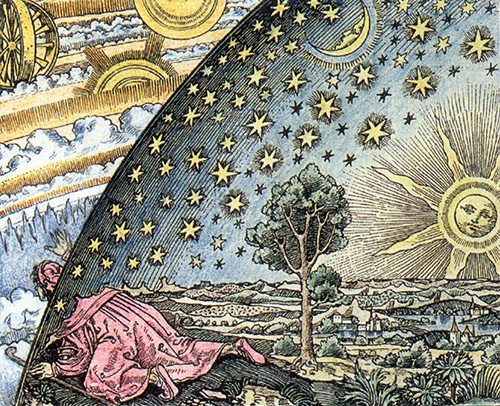 |
| The world in the Middle-Ages |
|
|
The fact that flashing light can create beautiful images and near-psychedelic effects has been known by humans since the discovery of fire.
This must have been very valuable knowledge for ancient shamans and poets who learned to use the images in flames to practice their "magic". The phenomenon also intrigued the scientists of the ancient world who explored its practical applications. |
| |
|
|
|
|
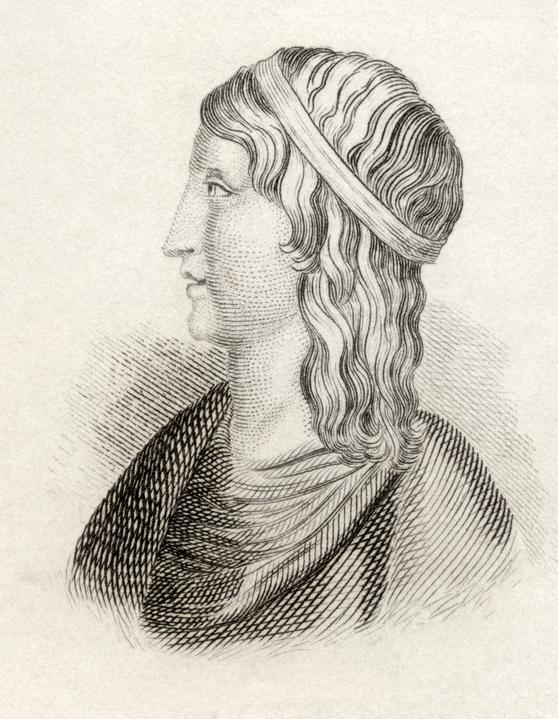 |
| Apuleius |
|
|
In 125 A.D., Apuleius did an experiment with a flashing light stimulus created by the rotation of a potter's wheel.
In +/- 200 A.D., Ptolemy observed that by placing a spoked wheel between an observer and the sun, the flickering of the sun through the spokes of the wheel could create patterns and colours in the observer's eyes and produce a feeling of euphoria. |
|
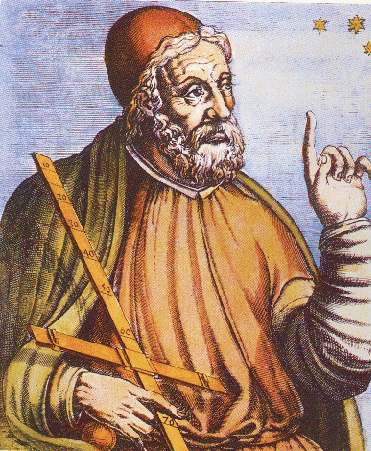 |
| Ptolemy |
|
| |
|
|
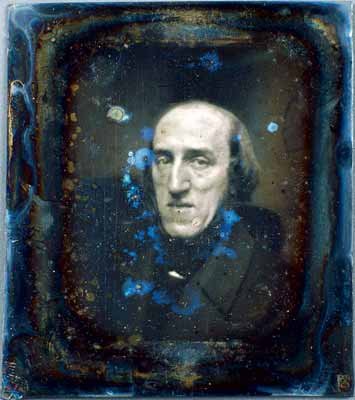 |
| Joseph Plateau |
|
|
Closer to our time, in the 19th century, Joseph Plateau, a Belgian scientist (!) famous for his research on retinal persistence and an originator of the cinema, used the flashing of light through a wheel to study the phenomenon of oscillation fusion.
By making the light oscillate faster and faster, he discovered that, at a given point, the oscillations seemed to "melt" into a single, stable light scheme. Plateau also discovered that healthy people were able to see separate light flashes at a much higher blinking speed than sick people could. (Over the past years, studies using light sources such as the tachistoscope to create rapid light flashes have revealed that experienced meditators are able to see distinct light flashes at a much higher blinking speed than non-meditators). |
| |
|
|
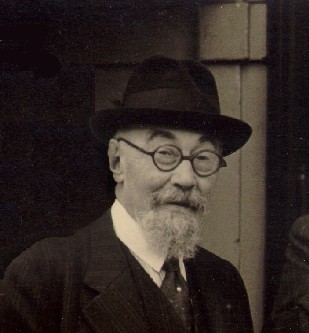 |
| Pierre Janet |
|
|
At the end of the last century, the French psychologist Pierre Janet discovered that when his patients at the Salpêtrière hospital in Paris were exposed to flickering lights, their symptoms of disequilibrium decreased and they became more relaxed.
Modern scientific research into the effects of rhythmic light started in the mid-1930s when scientists discovered that the brain's electrical rhythms tended to take on the same rhythm as a light stimulus, a process known as FFR = Frequency Following Response. |
| |
|
|
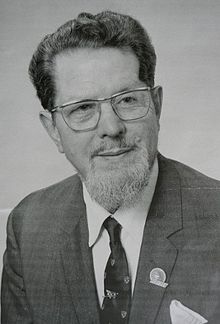 |
| W. Gray Walter |
|
|
Research increased significantly at the end of the 1940s when the great British neuroscientist W. Grey Walter, the pioneer of the EEG and discoverer of theta waves, used an electronic stroboscope and advanced EEG equipment to study what he called "the flicker phenomenon". He discovered that rhythmically flashing light quickly modified the activity of the brain waves that are found throughout the encephalon and show its activity type. The flashes literally lead to very deep states of relaxation and produce very distracting, vivid and colourful mental images.
He was also very surprised to find that the flickering seemed to modify the activity of brain waves throughout the cortex instead of only affecting those areas linked to vision. He observed that the waves spread throughout the entire brain. |
Walter wrote: "The rhythmic series of flashes appear to be breaking down some of the barriers between different regions of the brain. This means the stimulus of flicker received by the visual projection area of the cortex was breaking bounds - its ripples were overflowing into other areas." The subjective experiences of the people watching the flashes were even more intriguing: "The subjects who took part in his experiments spoke of lights like comets or fireworks, supernatural colours, "mental" colours more than purely visual ones."
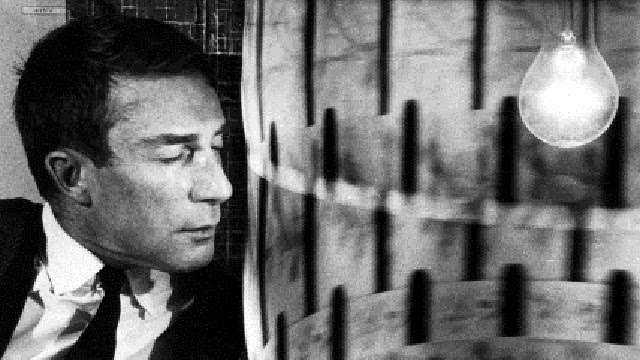 |
| Brion Gysin |
|
|
Brion Gysin can be considered one of the great precursors of AVS systems. He was a British-Canadian artist, poet, writer and painter. He was born on 19 January 1916 in Taplow, Buckinghamshire and died on 13 July 1986 in Paris.
An experience he had in 1958 led him to create the "Dreamachine". He wrote in his journal entry of 21 December 1958 : |
« Had a transcendental storm of colour visions today in the bus going to Marseilles. We ran though a long avenue of trees and I close my eyes against the setting sun. An overwhelming flood of intensely bright colours exploded behind my eyelids : a multi-dimensional kaleidoscope whirling out through space. I was swept out of time. I was out in a world of infinite number. The vision stopped abruptly as we left the trees.»
In 1960, Brion Gysin spoke to his friend the scientist Ian Sommerville about the possibility of reproducing the phenomenon that had led to his visions. On 15 February 1960, Ian Sommerville answered him and told him that he had built a simple machine to create light pulses with a perforated paper cylinder and a plate spinning at 78 rpm. They experimented with several different cuts for the machine which Gysin then named the Dreamachine. The results of their experiments were published in the second issue of Olympia magazine, in January 1962.
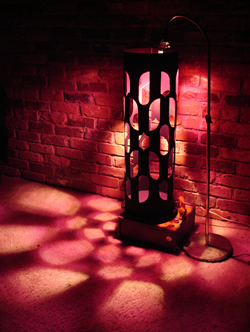 |
| The Dreamachine |
|
|
The Dreamachine (originally Dream Machine) was a rotating cylinder with slits and a bulb in the centre. The rotating cylinder causes the light emitted by the bulb to pass through the slits at a certain frequency. This has the property of plunging the brain into a state of relaxation and of producing visions in the user when they look at the Dreamachine with closed eyes, through their eyelids.
In its original form, a Dreamachine is made from a cylinder with slits cut in the sides. The Dreamachine cylinder is placed on a record turntable and rotated at 78 or 45 revolutions per minute. A light bulb is suspended in the cylinder and the speed of rotation and the number of slits causes the light emitted to pass through the slits at a constant frequency between 8 and 13 impulses per second. |
Gysin's research attracted the attention of several artists including the American writer William Burroughs, with whom he developed a simple flickering light system called the "Dream machine". Burroughs described it in 1960: "Subjects report dazzling lights and unearthly brilliance and color...Elaborate geometric constructions of incredible intricacy build up from multidimensional mosaic into living fireballs...or resolve momentarily into apparently individual images and powerfully dramatic scenes like brightly colored dreams."
A series of scientific studies in the 1960s and 1970s demonstrated that the effects of flashing at certain frequencies appeared to have amazing powers. Different scientists found that this photic stimulation could have a number of beneficial effects, such as increasing the state of suggestibility, improving certain intellectual functions such as memory, and creating harmony in the mind. Some even talked at this time of a form of hemispheric synchronisation.
 |
| Dr. Lefebure |
|
|
In France, starting in the 1950s and for over 30 years, Dr. Lefebure carried out research on the impact of repeated light stimulation on the brain and, particularly, on the use of phosphenism in pedagogy and for psychic development. Phosphenes are subjective light sensations, that is, they are not produced directly by excitement of the retina by light, but by the brain itself after a period of exposure to a stable light source. Dr. Lefebure was a true pioneer in the field. |
| |
|
|
The history of sound stimuli
| |
|
|
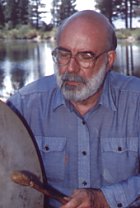 |
| Michael Harner |
|
|
Humans have also always been passionate about the effects of rhythmic sound and aware of its effect on the mind and on brain wave frequency following, as demonstrated, for example, by the complex sound following techniques developed over thousands of years by shamans, medicine men around the world, and priests. As Michael Harner, the renowned authority on anthropology and shamanism, notes, "The basic instruments for entering into a SSC (Shamanic State of Consciousness) are the drum and the rattle. The shaman only uses his drum or rattle to create or maintain the SSC… The repetitive sound of the drum is generally fundamental to initiating the shaman's task in SSC. Siberian and other shamans sometimes, and rightly, speak of their drum as the "horse" or "canoe" that carries them to the underground or celestial world. The constant and monotonous beating of the drum acts like a wave that transports the shaman and helps him first to enter the SSC then to sustain him during his journey." |
It was later understood that the special state of mind that these early doctors were trying to reach was simply the sophronic state, at the edge of sleep, which all sophrologists in our countries try to reach (sophronic state = state of consciousness at the edge of sleep, still awake).
In the early 1960s, the researcher Andrew Neher also studied the effects of drum beats on electroencephalogram charts and discovered that rhythmic beating profoundly changed brain wave activity. Harner also pointed out that "other researchers in the field of shamanistic rites have found that a drum beat frequency of about five cycles per second (that is, in the category of theta brain wave frequencies) were predominant in the procedures used."
In addition, humans have always appreciated the power of music, which is obviously a succession of more or less rhythmic auditory signals that expand consciousness or, at least, modify its level. As you know, music can create a multitude of different emotions (enthusiasm, relaxation, joy, sadness, melancholy, hope, loneliness, ecstasy, etc.). For thousands of years, musicians and composers have consciously and intentionally used the states of mind of their audiences by playing with the frequency of rhythms and sounds in their music.
In the 1960s, Dr. Lefebure also studied the effects of sound frequencies, which is why he is known as a true precursor. He created a device called the "alternophone", a real ancestor of the sound aspect of the variable frequency audiovisual stimulator. He defined his device as follows: "alternative listening consists in hearing a sound, first with the right ear, then with the left ear, that can be buzzing, banging or both together, on an adjustable, regular rhythm.
The effects of the alternophone were verified in various government laboratories such as the CNRS (National Centre for Scientific Research), the National Institute for Sport and the central PTT laboratory. Dr. Lefebure recommended using the alternophone "in pedagogy to promote better understanding and better concentration. He believed that it greatly improved memorisation(!). “Ideas are clearer and work goes faster" and, for psychic development: "cortical void is reached quickly, as are states of profound relaxation." According to Dr. Lefebure, this type of listening excites the corpus callosum (the bridge between the brain's two hemispheres).
Surprisingly, Dr. Lefebure never thought of mixing intermittent light stimulation with rhythmic sound or, in any event, no indication of this has been found in his writings.
Simultaneous sound and light
Ancient rituals around a great fire often involved rhythmic sounds, the beating of a drum, clapping, chanting, and flickering lights created by the bodies of people dancing in front of the fire to the rhythm of the drums...
Technical progress has made even more powerful combinations of sound and light possible. The cinema developed soundtracks and filmmakers quickly learned to use the potential of sound to increase the power of the images on screen. This made some modern films into real audiovisual experiences in which the rhythmic soundtrack was melded with the flickering light thanks to assembly techniques, creating changes in the audience's consciousness. This would have been impossible using sound or light separately. The combined effect of electric musical instruments and amplified sound with psychedelic, stroboscopic light shows like those of the rock concerts of the 1960s could produce quick and profound changes in consciousness.
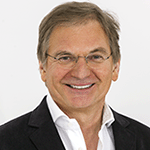 |
| S. Dumonceau Krsmanovic |
|
|
In 1985, no one had yet seen an AVS (audiovisual stimulator) in Europe. There was no Google in the world and access to information was complex. Stéphane Krsmanovic Dumonceau finished a degree in Physical Education at the Free University of Brussels and another one in Physiotherapy. As part of a doctorate in the psychology of Physical Education, he became interested in how to handle the stress experienced by high-level athletes. To better enable them to manage their stress during travel abroad, he developed the prototype for a variable frequency audiovisual stimulator based on his studies of pulsating sound and light and the work of Burroughs and Gysin. He called it the THETA +1.0 and its success was immediate with athletes who asked for more. |
| |
|
|
|
|
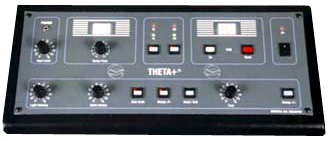 |
| THETA + |
|
|
The new THETA + V1.2 was released soon afterwards and included semi-automatic functions (sweep mode, sweep tonality & sweep frequency).
At this time, Stéphane Krsmanovic turned to Patrick Louis, a young electronics engineer. The latter was able to perform a small miracle of electronics and the first Dreamer 1.0 came out in October 1989. It was a revolution! |
|
 |
| Dreamer 1.0 |
|
Everything about it was new: the sessions were now pre-programmed. There were three levels of consciousness split into seven sessions of 15 to 40 minutes. The program names were printed on the keyboard to make the device as user-friendly as possible. Stéphane Dumonceau believed that it would one day be sold in supermarkets like a Walkman, wrapped in thermoformed plastic like a traditional mass market Hi-Fi system.
| |
|
|
|
|
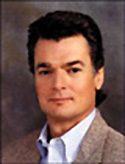 |
| Michael Hutchinson |
|
|
During this period, Michael Hutchinson, the great American guru, detected that a trend in electronic machines intended to stimulate the mind had emerged: "MIND MACHINES". He wrote a book on mind machines which became the best-seller “MEGABRAIN”. Stéphane Krsmanovic travelled to San Francisco that year and presented the Dreamer to him. He wrote a rave article in his monthly MEGABRAIN REPORT newsletter. To summarise, he described the Dreamer as the "first mass market product as powerful as machines costing several thousands of dollars, but costing only $250!" |
|
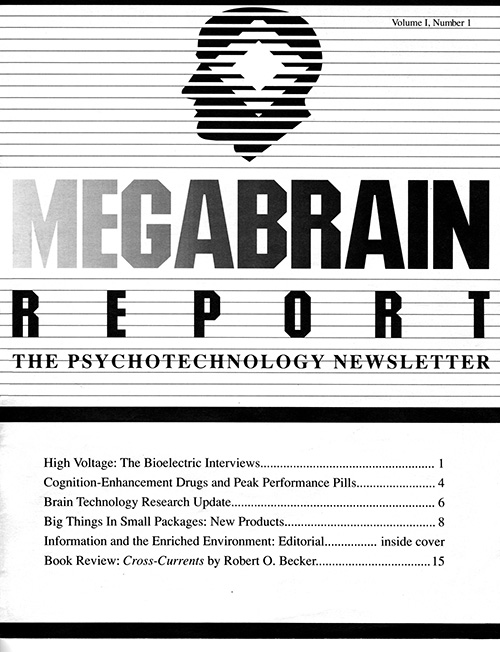 |
| Newsletter Megabrain |
|
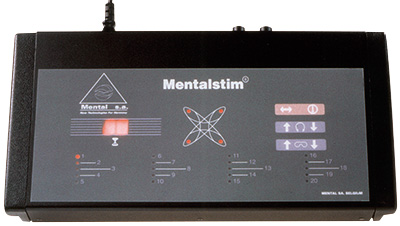 |
| The Mentalstim |
|
|
Stéphane Krsmanovic quickly began to export the Dreamer to France, Germany and Spain then to Japan in 1990 and Korea in 1993.
In 1993, Stéphane Krsmanovic created the Mentalstim, a professional device intended for the hospital market and exported in large quantities to Brazil via Bertan Gürsel's PROMOTECH company. |
PSiO and PSiO Technologies R&D began in 2006 but was blocked from the outset by the enormous investment required to meet the specifications, reportedly over a million USD… PYSCHOMED was born in 2008, thanks to financing from the Walloon government.
The first PSiO prototype came out on 4 April 2012.
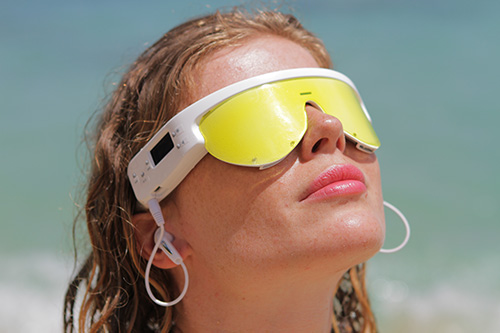 |
| The PSiO |
P.S.: Why is the PSiO the most sophisticated AVS machine ever built :
- All-in-one (a world first)
- Colour stimulation with eyes open
- Internal MP3 reader
- Rebalancing software based on 20 years of clinical experience (a world first)
To be continued... |